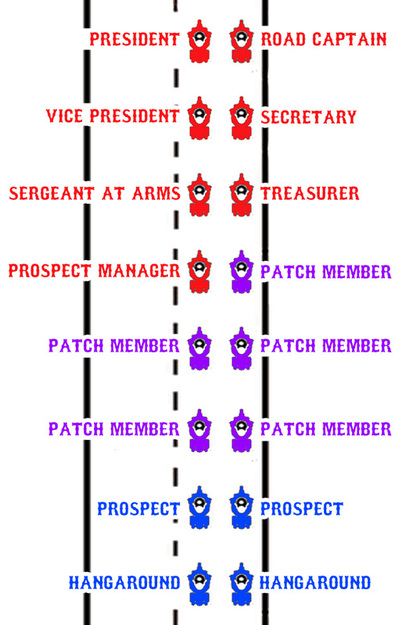Are Hells Angels All White?

The Hells Angels Motorcycle Club is one of the most recognizable motorcycle clubs in the world, often wrapped in an aura of mystery and notoriety. Founded in 1948 in California, the club has become synonymous with the outlaw motorcycle culture. However, a common question that arises is whether the Hells Angels are predominantly or exclusively white. This inquiry not only sheds light on the club's demographics but also reflects broader societal issues concerning race, identity, and belonging.
Understanding the composition of the Hells Angels is significant because it challenges stereotypes and invites a more nuanced discussion about race within subcultures. In this article, we will explore the club’s history, its membership demographics, and the implications of these factors in a broader context.
Quick Info Table
| Aspect | Information |
|---|---|
| Founded | 1948 |
| Original Location | California |
| Known For | Outlaw motorcycle culture |
| Symbol | Death Head (skull logo) |
| Membership | Global, with chapters worldwide |
| Notable Demographics | Predominantly white, but diverse in some areas |
The History of the Hells Angels
Formation and Early Years
The Hells Angels Motorcycle Club was founded in Fontana, California, shortly after World War II. Many of the early members were veterans who sought camaraderie and a sense of belonging. The club's name is believed to have been inspired by a World War II bomber squadron, reflecting the military roots of its founding members.
Growth and Expansion
Throughout the 1950s and 1960s, the Hells Angels expanded rapidly, establishing chapters across the United States and internationally. This growth coincided with the rise of motorcycle culture, becoming a symbol of rebellion against mainstream society. The club’s image was further popularized by media portrayals in films and books, often emphasizing its rough exterior and outlaw status.
Membership Demographics
Predominantly White Membership
Historically, the Hells Angels have been viewed as a predominantly white organization. This perception stems from the club’s early membership, which primarily consisted of white males from working-class backgrounds. The club’s culture and values have often resonated more with this demographic, contributing to its longstanding reputation.
Exceptions and Diversity
However, while the stereotype of an all-white club persists, it is essential to recognize that membership is not strictly limited by race. Over the years, various chapters have included members of different ethnic backgrounds. For example, some chapters in urban areas have seen a more diverse membership, reflecting the racial demographics of those regions.
Notable Examples
- In Oakland, California, chapters have included members from Hispanic and African American backgrounds.
- In Europe, particularly in countries like Germany and Italy, the club has attracted a more diverse membership due to different cultural contexts and social dynamics.
Internal Dynamics
The internal culture of the Hells Angels can also influence who is welcomed into the club. Members often emphasize loyalty and brotherhood over racial identity, and individuals who align with the club’s values and lifestyle may be accepted regardless of their background. However, this inclusivity can vary significantly from one chapter to another, shaped by local cultural attitudes and community dynamics.
The Intersection of Race and Identity
Societal Perceptions
The Hells Angels are often depicted in media as a monolithic group, reinforcing the stereotype of an all-white organization. This portrayal can overlook the complexities of identity within the club and the broader motorcycle culture.
Challenging Stereotypes
By recognizing that the Hells Angels are not exclusively white, it challenges prevailing stereotypes and invites a more complex discussion about race and identity within subcultures. For example, some members argue that the club represents a form of rebellion that transcends racial boundaries, allowing for a diverse range of experiences and identities to coexist.
The Role of Media
Media representations play a significant role in shaping public perceptions of the Hells Angels. Films like "Easy Rider" and documentaries often emphasize the club's rebellious nature, focusing on the image of the outlaw biker without delving into the nuances of its membership. This can perpetuate the myth of a racially homogenous group, obscuring the reality of diversity found in certain chapters.
Current Trends and Future Directions
Evolving Membership
As society continues to grapple with issues of race and identity, the Hells Angels may also evolve in response to these changes. New members, influenced by contemporary social movements, may bring different perspectives and values to the club.
The Impact of Globalization
Globalization has also impacted the Hells Angels, as chapters in different countries interact and share experiences. This cross-cultural exchange may lead to a more diverse membership and potentially challenge existing norms within the club.
Conclusion
In summary, while the Hells Angels Motorcycle Club has historically been perceived as predominantly white, this characterization does not account for the complexities of its membership. Various chapters have embraced diversity, showcasing a range of backgrounds and experiences. Acknowledging this diversity not only challenges stereotypes but also enriches the conversation about race and identity within subcultures.
As society continues to evolve, so too may the Hells Angels, reflecting broader cultural shifts and the ongoing dialogue about inclusivity and belonging. Understanding the multifaceted nature of this iconic club encourages a deeper appreciation of its role in the motorcycle culture and society at large.
Ultimately, the question of whether the Hells Angels are all white serves as a starting point for a more significant discussion about race, identity, and the ways in which communities form and evolve. Engaging with these topics prompts reflection on our perceptions and encourages a more nuanced understanding of diversity within subcultures.



Comments ()